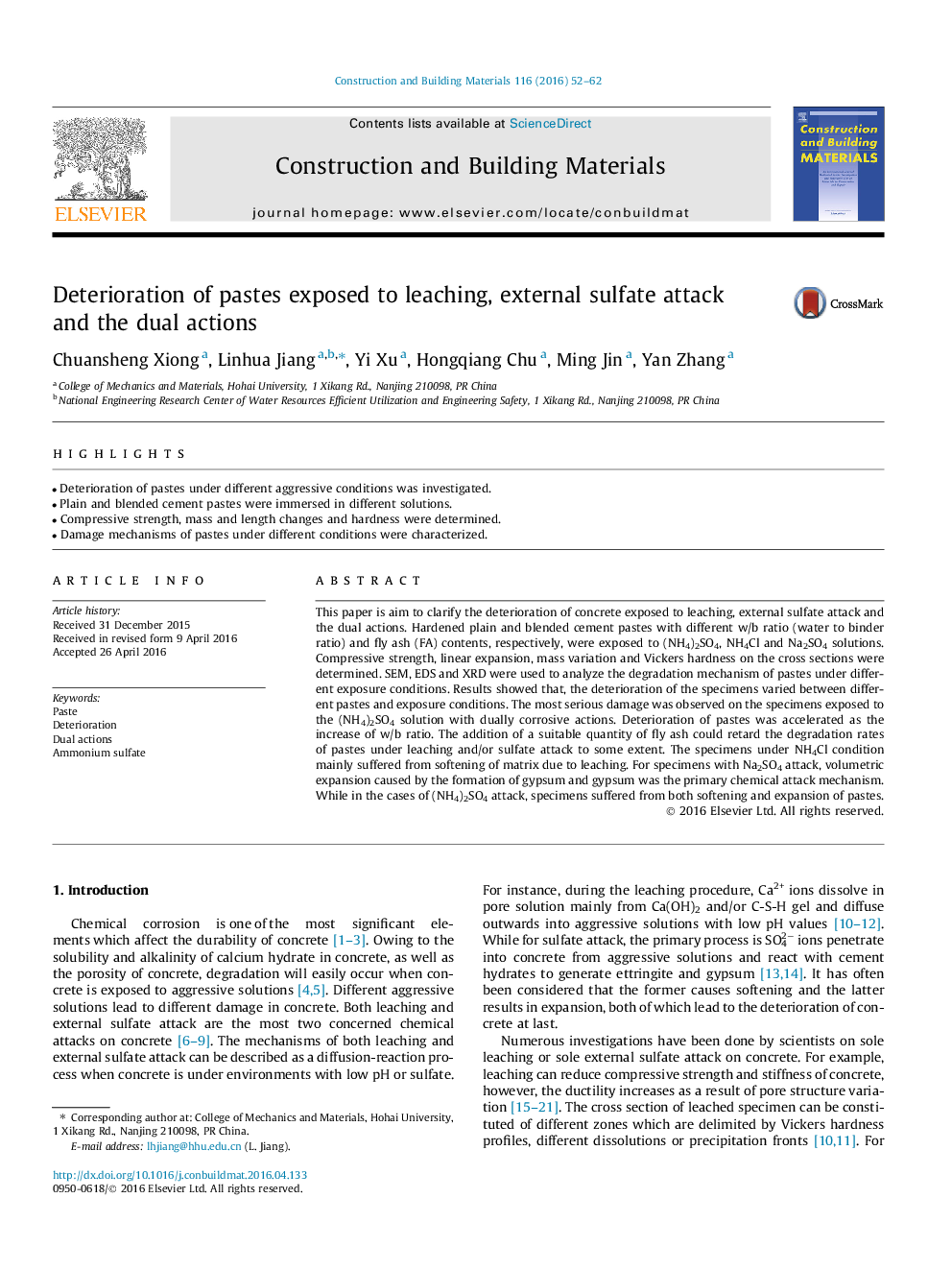| Article ID | Journal | Published Year | Pages | File Type |
|---|---|---|---|---|
| 6718596 | Construction and Building Materials | 2016 | 11 Pages |
Abstract
This paper is aim to clarify the deterioration of concrete exposed to leaching, external sulfate attack and the dual actions. Hardened plain and blended cement pastes with different w/b ratio (water to binder ratio) and fly ash (FA) contents, respectively, were exposed to (NH4)2SO4, NH4Cl and Na2SO4 solutions. Compressive strength, linear expansion, mass variation and Vickers hardness on the cross sections were determined. SEM, EDS and XRD were used to analyze the degradation mechanism of pastes under different exposure conditions. Results showed that, the deterioration of the specimens varied between different pastes and exposure conditions. The most serious damage was observed on the specimens exposed to the (NH4)2SO4 solution with dually corrosive actions. Deterioration of pastes was accelerated as the increase of w/b ratio. The addition of a suitable quantity of fly ash could retard the degradation rates of pastes under leaching and/or sulfate attack to some extent. The specimens under NH4Cl condition mainly suffered from softening of matrix due to leaching. For specimens with Na2SO4 attack, volumetric expansion caused by the formation of gypsum and gypsum was the primary chemical attack mechanism. While in the cases of (NH4)2SO4 attack, specimens suffered from both softening and expansion of pastes.
Keywords
Related Topics
Physical Sciences and Engineering
Engineering
Civil and Structural Engineering
Authors
Chuansheng Xiong, Linhua Jiang, Yi Xu, Hongqiang Chu, Ming Jin, Yan Zhang,
